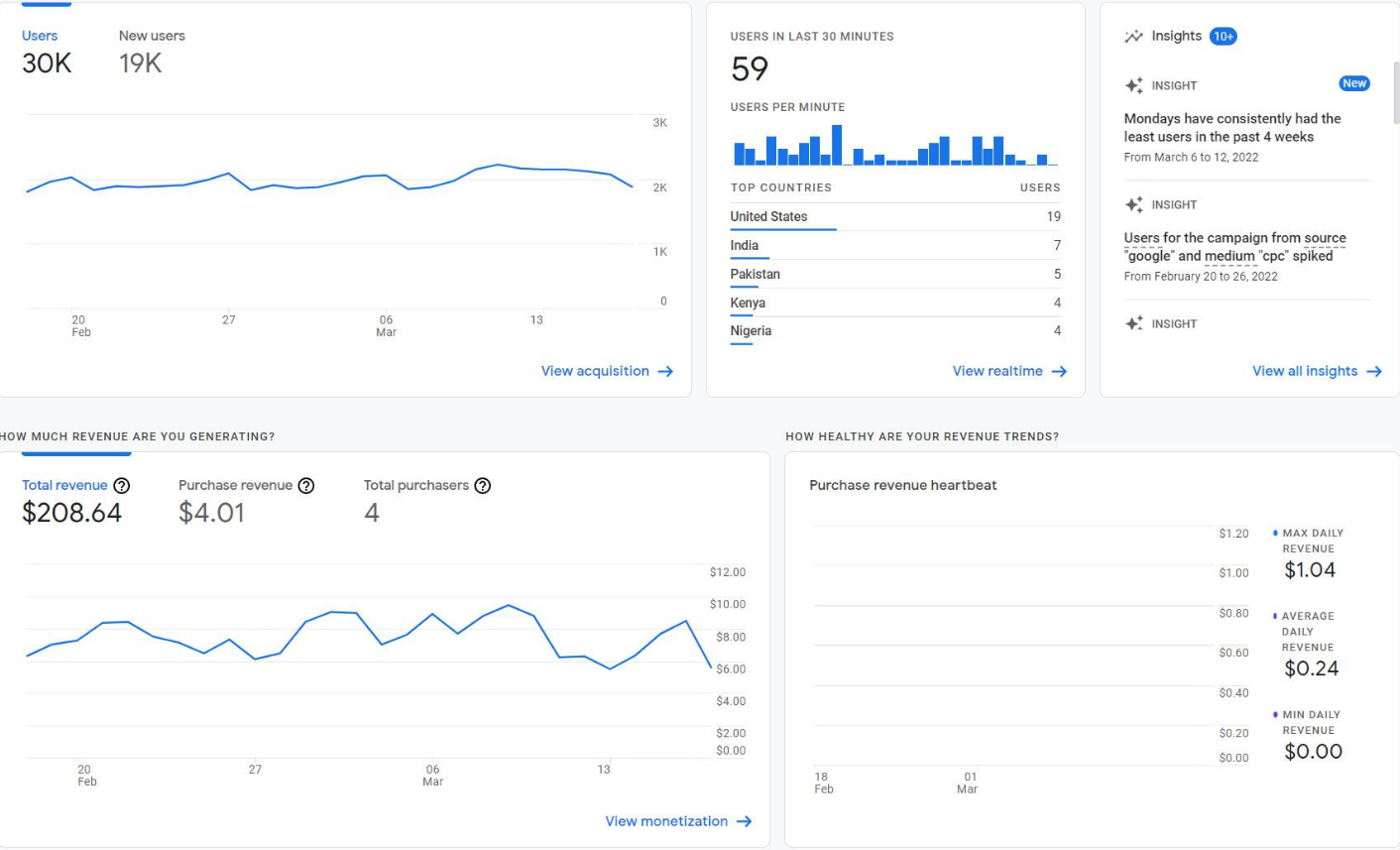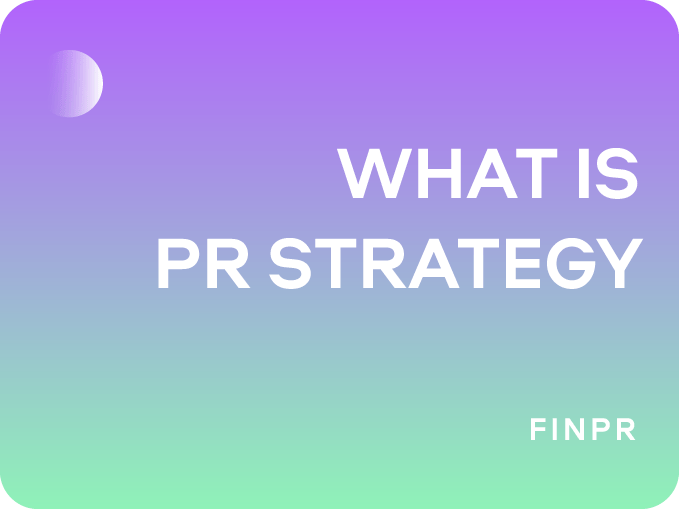
In the world of business and brand building, public relations (PR) acts as a beacon guiding organizations to create a favorable public image, owned media and strengthen relationships with audiences. At its core, solid PR strategy is the art and science of shaping narratives, managing perceptions, and making genuine connections. But when information travels at the speed of light, and reputations can be made or destroyed with a single tweet, the importance of a comprehensive PR strategy cannot be overemphasized. Let's uncover the secrets to creating brand influence through effective PR tactics.
The Basics of Public Relations Strategy
What is Public Relations?
Public Relations, commonly abbreviated as PR, is a multifaceted discipline that focuses on managing the communication between an organization and its various stakeholders. These stakeholders can include customers, investors, employees, and the general public. The primary goal of PR strategy is to shape public perception of the organization in a way that furthers its objectives, whether those are increasing sales, building brand loyalty, or maintaining a positive reputation.
In today's interconnected world, PR tactic is not just a 'nice-to-have' but a 'must-have' for businesses and organizations of all sizes. It serves as the bridge between the brand and the public, helping to build trust, credibility, and positive relationships. Professionals use a variety of best pr tools and channels to achieve this, ranging from press releases and media relations to social media campaigns and community engagement initiatives.
The Objectives of PR
Public Relations is not a one-size-fits-all endeavor; its objectives can vary widely depending on the organization's goals, industry, and target audience. However, there are some universal objectives that most PR strategies aim to achieve. Understanding these objectives can provide a solid foundation for crafting a successful PR strategy.
Building Brand Awareness
One of the primary goals of any PR campaign is to increase brand awareness. This involves making sure that the public knows who you are, what you do, and why you matter. A well-executed PR strategy can elevate your brand's profile, making it more recognizable and memorable in the eyes of your target audience.
Managing Reputation
Reputation is one of an organization's most valuable assets. PR activities aim to build and maintain a positive reputation by highlighting the company's strengths, achievements, and contributions to society. This can involve anything from showcasing corporate social responsibility initiatives to managing online reviews.
Influencing Public Opinion
PR is not just about disseminating information; it's also about shaping opinions. Whether it's changing public perception about a product or influencing policy decisions, effective PR strategies aim to sway public opinion in a manner that aligns with the organization's goals.
Enhancing Stakeholder Relations
Stakeholders are not just customers or investors; they can also be employees, suppliers, and even the community where the business operates. PR aims to foster positive relationships with all these groups, recognizing that each has a unique role to play in the organization's success.
Driving Business Outcomes
Ultimately, all PR activities should contribute to achieving business objectives, whether that's increasing sales, attracting investment, or entering new markets. Effective PR can serve as a catalyst for business growth, providing the social proof and credibility needed to convert prospects into customers and skeptics into believers.
Types of PR
Public Relations is a broad field that encompasses various specialized areas, each with its own set of objectives, tactics, and best practices. Understanding these different types can help organizations tailor their PR strategies more effectively, ensuring that they are reaching the right audiences through the most appropriate channels.
Media Relations
- Definition: Media Relations involves working directly with journalists, editors, and influencers to secure media coverage for the organization.
- Objectives: Increase brand visibility, manage public perception, and disseminate important information.
- Tactics: Press releases, media kits, press conferences, and one-on-one interviews.
Investor Relations
- Definition: Investor Relations focuses on communicating with current and potential investors, financial analysts, and other financial stakeholders.
- Objectives: Build investor confidence, comply with regulatory requirements, and attract investment.
- Tactics: Annual reports, investor meetings, earnings calls, and financial PR.
Community Relations
- Definition: Community Relations aims to build and maintain a positive relationship between the organization and the communities in which it operates.
- Objectives: Enhance corporate image, foster goodwill, and contribute to community development.
- Tactics: Community events, sponsorships, philanthropy, and local partnerships.
Internal Communications
- Definition: Internal Communications focuses on facilitating effective communication within the organization.
- Objectives: Boost employee morale, improve productivity, and ensure that employees are aligned with the company's goals.
- Tactics: Internal newsletters, intranet, town hall meetings, and employee recognition programs.
Consumer Relations
- Definition: Consumer Relations involves managing interactions with the organization's customers.
- Objectives: Improve customer satisfaction, handle complaints, and encourage brand loyalty.
- Tactics: Customer service, feedback surveys, loyalty programs, and social media engagement.
Government Relations
- Definition: Government Relations is the practice of interacting with government officials and regulators to influence public policy and legislation.
- Objectives: Advocate for favorable policies, ensure compliance, and establish the organization as a thought leader in its industry.
- Tactics: Lobbying, public affairs campaigns, and regulatory submissions.
Digital PR
- Definition: Digital PR focuses on online reputation management and digital media relations. Companies in 2025 often turn to Web3 PR services to master new trends.
- Objectives: Increase online visibility, manage online reviews, and engage with audiences on digital platforms.
- Tactics: SEO, content marketing, social media campaigns, and influencer partnerships.
Crafting Your PR Strategy in 2025
1. Understanding Your Target Audience
In the realm of Public Relations, understanding your target audience is not just a preliminary step. It's the foundation upon which your entire PR strategy should be built. Knowing who you're speaking to allows you to craft messages that resonate, choose channels that are most effective, and set objectives that are both meaningful and achievable. Below, we delve into the critical aspects of understanding your target audience for a successful PR strategy.
Identifying Demographics:
- Age Group: Different age groups have different media consumption habits and preferences. Tailoring your PR strategy to the age group you aim to reach can significantly increase engagement.
- Gender: Gender-specific PR campaigns can be highly effective when the product or message is particularly relevant to one gender.
- Location: Geographical considerations can influence not just the language of your PR messages but also the cultural nuances and local issues that matter to your audience.
Psychographics and Consumer Behavior:
- Interests and Hobbies: Knowing what your audience is passionate about can help you create PR campaigns that they'll naturally be interested in.
- Values and Beliefs: Aligning your PR messages with the core values and beliefs of your target audience can create a deeper emotional connection.
- Purchasing Behavior: Understanding how and why your audience makes purchasing decisions can guide you in crafting PR campaigns that convert.
Utilizing Data Analytics:
- Surveys and Questionnaires: These can provide direct insights into what your audience thinks and wants.
- Social Media Analytics: Platforms like Facebook and Twitter offer in-depth analytics that can help you understand your audience's behavior and preferences.
- Web Analytics: Tools like Google Analytics can provide valuable data on who is visiting your website, how long they're staying, and what they're interested in.

Creating Audience Personas:
- What is an Audience Persona?: An audience persona is a semi-fictional representation of your ideal customer based on market research and real data.
- How to Create One: Steps to gather data and create a comprehensive audience persona.
- Using Personas in PR Strategy: How to tailor your PR campaigns to different personas for maximum impact.
Understanding your target audience is not a one-time activity but an ongoing process. As market conditions change, and as your business evolves, your audience too will undergo changes. Keeping your finger on the pulse of who your audience is can make the difference between a PR strategy that merely makes noise and one that truly communicates.
2. Setting Clear Objectives
Without a well-defined goal, PR campaigns can become directionless, wasting valuable resources and potentially missing their mark. By establishing clear objectives from the outset, organizations can ensure that their PR efforts are aligned with their broader business goals, leading to more impactful and measurable outcomes.
It is important that PR goals are not developed in isolation, but aligned with the overall business goals of the organization. For example, if the company's goal is to enter a new market segment, the PR objective may be to create trust in the brand in this segment through targeted media placement.
The dynamic nature of the business environment means that PR objectives may be periodically reviewed and adjusted. Regularly assessing progress against objectives allows organizations to make necessary adjustments, ensuring continued relevance and effectiveness.
Characteristics of Effective PR Objectives:
- Specific: Objectives should be precise and unambiguous. Instead of "increase brand awareness," a more specific objective might be "increase website traffic by 20% over the next quarter."
- Measurable: The success of the objective should be quantifiable. This allows for easy tracking and evaluation.
- Achievable: While it's good to aim high, objectives should be realistic given the available resources and timeframe.
- Relevant: The objectives should align with the broader goals of the organization and be pertinent to the target audience.
- Time-bound: Setting a clear timeframe for achieving the objective ensures focus and urgency.
Examples of PR Objectives:
- Reputation Management: Improve the company's online rating from 3.5 to 4.5 stars on industry review sites within six months.
- Brand Awareness: Secure at least five feature articles in top-tier industry publications by the end of the year.
- Crisis Management: Reduce negative sentiment on social media platforms by 30% within three months following a product recall.
- Stakeholder Engagement: Increase attendance at the annual shareholder meeting by 15% compared to the previous year.
- Product Launch: Achieve 50,000 product sign-ups within the first month of the product's release.
3. Choosing the Right Channels
In the age of information overload, where consumers are bombarded with messages from multiple sources, choosing the right channels for your PR strategy is crucial. The channels you select will serve as the conduits for your carefully crafted messages, ensuring they reach the right audience at the right time.
Traditional Media vs. Digital Media:
- Traditional Media: Newspapers, magazines, television, and radio have long been staples in PR. Understand when and why these channels are still effective.
- Digital Media: Websites, blogs, and online publications offer a different set of advantages, including real-time updates and a potentially global reach.
- Hybrid Approach: Why a mix of traditional and digital media often provides the most comprehensive strategy.
Social Media Platforms and Their Effectiveness:
- Facebook: Best for reaching a broad demographic and excellent for community building.
- Twitter: Ideal for real-time updates and direct engagement with your audience.
- Instagram: Highly visual platform suitable for brands with strong visual content.
- LinkedIn: The go-to platform for B2B PR strategies.
- YouTube: Excellent for video content, tutorials, and behind-the-scenes looks.
- TikTok, Snapchat, and Emerging Platforms: Understanding the new kids on the block and when to take the plunge.
4. Crafting the Message
The message you convey is not just a collection of facts or statements. It's a story. Storytelling is an ancient art form that has the power to engage, inspire, and persuade. In PR, storytelling serves as a vehicle to present your brand's vision, mission, and values in a way that resonates with your target audience. A well-crafted story can humanize your brand, making it more relatable and memorable.

Why does storytelling matter in 2025? Stories can evoke emotions, and emotions drive actions. A compelling story can create a lasting impression and encourage brand loyalty. If your product or service is complex, a story can help simplify it. By framing the information within a narrative, you make it easier for the audience to understand and remember. Moreover, a good story can elevate your brand image, making you stand out in a crowded marketplace.
Crafting a compelling narrative involves more than just stringing words together; it requires a deep understanding of your audience, your brand, and the message you want to convey. Here are some steps to help you create compelling narratives:
- Know Your Audience: Before you start crafting your message, you need to know who you're speaking to. What are their interests, pain points, and aspirations? Tailor your story to resonate with them.
- Define the Core Message: What is the one thing you want your audience to take away from your story? Whether it's the innovation behind your new product or the social impact of your brand, make sure this core message is clear and consistent throughout your narrative.
- Use Relatable Characters or Scenarios: People relate to other people, not faceless corporations. Use characters or real-life scenarios that your audience can identify with. This could be a satisfied customer, a dedicated employee, or even the CEO sharing a personal story related to the brand.
- Add Conflict and Resolution: A good story has a conflict and a resolution. In a PR context, this could be a problem that your product solves or a challenge that your company has overcome. The resolution should align with your core message and brand values.
- Keep it Authentic: In today's digital age, consumers are savvy and can easily spot a fabricated story. Make sure your narrative is authentic, transparent, and aligns with your brand's identity.
Implementing the PR Strategy
1. Building a PR Calendar
A well-timed press release or social media post can make all the difference between capturing the public's attention and getting lost in the noise. This is why building a PR calendar is an essential step in implementing your PR strategy.
A comprehensive PR calendar should include certain elements.
Key Dates and Events:
- Product Launches: Mark the dates when new products or services will be launched.
- Industry Events: Conferences, trade shows, and other industry-related events where your brand has a presence.
- Seasonal Opportunities: Holidays, seasons, or any other time-sensitive opportunities relevant to your brand.
Types of Content:
- Press Releases: Dates for the release of official statements or news.
- Blog Posts: Schedule for publishing informative or thought leadership articles.
- Social Media Posts: A timeline for regular updates, promotional content, and engagement activities on social media platforms.
Channels:
- Traditional Media: Newspapers, magazines, TV, and radio.
- Digital Media: Websites, blogs, and email newsletters.
- Social Media: Facebook, Twitter, Instagram, LinkedIn, etc.
How to Build Your PR Calendar:
- Start with Objectives: Align the calendar with the objectives set in your PR strategy.
- Identify Key Dates: Mark important dates and events that are crucial for your brand.
- Content Planning: Decide the types of content that will be distributed and when.
- Assign Responsibilities: Clearly state who is responsible for what, ensuring accountability.
- Review and Adjust: Regularly review the calendar to make adjustments as needed. Be flexible to accommodate unforeseen opportunities or challenges.
2. Media Outreach
The first step in effective media outreach is to build a comprehensive media list. This list should include journalists, bloggers, influencers, and other media professionals who are relevant to your industry and target audience.
Components of a Media List:
- Name and Position: The full name of the journalist or media contact, along with their job title.
- Media Outlet: The name of the publication, blog, or media channel they are associated with.
- Contact Information: Email address, phone number, and social media handles.
- Beat or Area of Interest: The topics they usually cover, to ensure relevance.
- Previous Interactions: Any history of engagement with your brand or similar topics.
Once your media list is ready, the next step is to craft a compelling pitch. This is your opportunity to grab the journalist's attention and make them interested in your story.
Elements of a Great Pitch:
- Subject Line: Make it catchy but straightforward. The subject line should give a clear idea of what the story is about.
- Introduction: Briefly introduce yourself and your brand. Make it personal if possible.
- The Hook: This is the crux of your pitch. Why should they care? What makes your story newsworthy?
- Supporting Information: Provide data, quotes, or any other supporting material that can add credibility to your story.
- Call to Action: Clearly state what you want them to do next. Whether it's to schedule an interview, attend an event, or simply get more information.
3. Social Media Engagement
Social media has become an indispensable tool for Public Relations. It offers a direct line of communication to your audience and provides a platform for real-time engagement. However, the rules of engagement on social media are different from traditional PR channels. Here are some best practices to follow:
- Listen and Respond: Social media is not just a broadcasting tool; it's a two-way communication channel. Listen to what your audience is saying, and respond in a timely and appropriate manner.
- Use Visuals: Visual content like images, videos, and infographics are more likely to be shared and engaged with than text-only posts.
- Leverage Hashtags: Use relevant hashtags to increase the visibility of your posts. But don't overdo it; one or two relevant hashtags per post are generally a good rule of thumb.
- Influencer Partnerships: Collaborating with influencers who resonate with your brand can help you reach a broader audience. For the best effect, it is necessary to use influencer management techniques, with which specialized solid PR agencies can help.
- User-Generated Content: Encouraging your audience to create and share content about your brand can provide social proof and enhance credibility.
4. Monitoring and Measurement
Monitoring and measurement are crucial for assessing the effectiveness of your PR strategy. Key Performance Indicators (KPIs) serve as the metrics that will help you understand how well your PR activities are performing. Here are some KPIs commonly used in PR:
Media Coverage:
- Quantity: The number of times your brand or story is mentioned in the media.
- Quality: The prestige or credibility of the media outlets that covered your story.
Audience Engagement:
- Likes, Shares, Comments: These metrics are particularly relevant for social media platforms.
- Click-Through Rate (CTR): The percentage of people who clicked on a link relative to the total number of viewers.
Sentiment Analysis: Positive, Neutral, Negative. Sentiment analysis tools can gauge the public's sentiment toward your brand based on the tone of media coverage and social media mentions.
Conversion Rate: The percentage of the audience that takes a desired action, such as making a purchase or signing up for a newsletter, after interacting with your PR content.
Consistent and regular reporting is essential for keeping track of your PR efforts and making data-driven decisions. Reports should be tailored to the needs of different stakeholders, such as executives, PR teams, and marketing departments.
Components of a PR Report:
- Executive Summary: A brief overview of the PR activities and their outcomes for the reporting period.
- KPI Metrics: Detailed statistics on the KPIs that were monitored.
- Highlights and Lowlights: Key successes and challenges encountered during the period.
- Recommendations: Based on the data, what actions should be taken moving forward?
Conclusion
Nowadays, a well-crafted and strategically executed PR plan is more important than ever. From understanding the basics of PR to crafting compelling messages, choosing the right channels, and implementing a robust strategy, each element plays a critical role in your brand's success.
The landscape of PR is ever-changing, especially with the rise of digital media and evolving consumer behaviors. However, the core principles remain the same: understanding your audience, crafting a compelling message, and strategically disseminating that message.
If you haven't already, now is the time to start implementing a robust PR strategy. Use the insights and guidelines provided in this article as a roadmap to navigate the complex yet rewarding world of Public Relations. So go ahead, start crafting your PR strategy today, and set your brand on the path to greater visibility, credibility, and success.
FAQ
Why is PR important for a business?
Public Relations involves managing information between an organization and its audience, including customers, investors, employees, and the media.
PR is vital for building and maintaining a positive public image, managing media relations, and communicating your organization’s values, products, and services. Effective PR can enhance your brand’s credibility, trust, and reputation.
How does PR differ from advertising?
PR focuses on earning public attention and credibility through media coverage and community engagement, rather than buying attention through paid advertisements. It’s more about influencing perceptions and creating narratives than direct promotion.
How can I build and maintain relationships with journalists and media outlets?
To build and maintain relationships with the media, consider these tips:
- Research: Understand the reporters and outlets that cover your industry.
- Personalize Outreach: Tailor your pitches to their interests and needs.
- Provide Value: Offer unique, newsworthy stories and expert insights.
- Be Responsive: Respond promptly to media inquiries and requests.
- Follow Up: After coverage, express gratitude and provide additional information or resources.
What role does social media play in PR success?
Social media is a powerful tool in modern PR. It allows you to connect directly with your audience, share news and updates, and respond to feedback and inquiries in real-time. A well-executed social media strategy can enhance your brand's reputation and reach.
Maintaining good media relations is essential in PR. Positive relationships with journalists and media outlets can lead to more and better coverage, enhancing your organization’s ability to reach and influence your target audience.
How can I measure the effectiveness of my PR efforts?
Effectiveness can be measured through various metrics like media coverage quality and quantity, social media engagement, website traffic, sentiment analysis, and specific campaign objectives like brand awareness or event attendance.
Can small businesses benefit from PR?
Absolutely. Small businesses can leverage PR to build brand awareness, establish credibility, and compete in the market. Even with limited resources, effective PR tactics can significantly impact a small business's visibility and reputation.
What are some common PR mistakes to avoid?
Common PR mistakes to avoid include:
- Lack of Strategy: Operating without a clear PR strategy.
- Ignoring Social Media: Neglecting the power of social media for PR purposes.
- Overpromising: Making exaggerated claims that cannot be substantiated.
- Lack of Transparency: Failing to communicate openly in times of crisis.
- Not Measuring Results: Neglecting to track and analyze the outcomes of PR efforts.
Is it necessary to hire a PR agency or consultant for success?
While it is possible to handle PR in-house, many organizations choose to hire PR agencies or consultants for their expertise, media connections, and strategic guidance. The decision depends on your budget, resources, and specific PR needs.
A well-executed PR strategy can significantly impact your organization's success by enhancing reputation, building trust, and fostering positive relationships. By understanding and implementing the core principles of PR, you can navigate the complex landscape of public relations with confidence.




